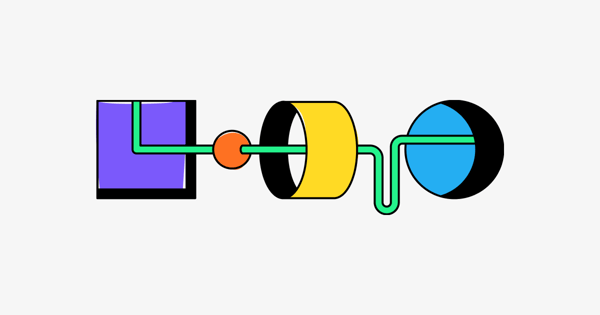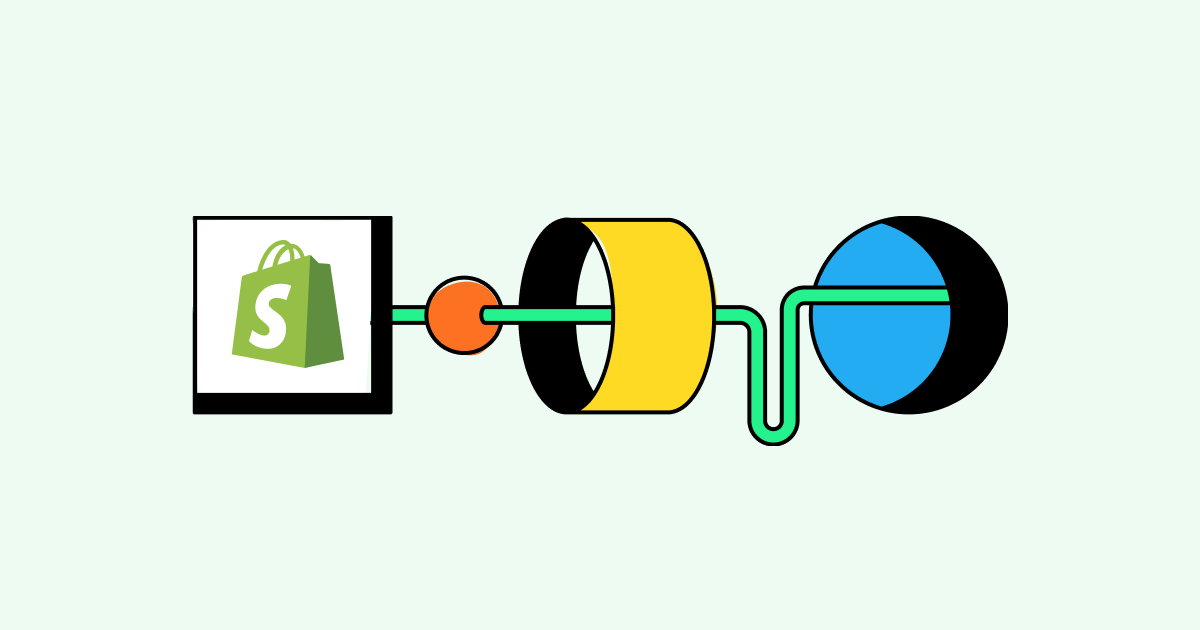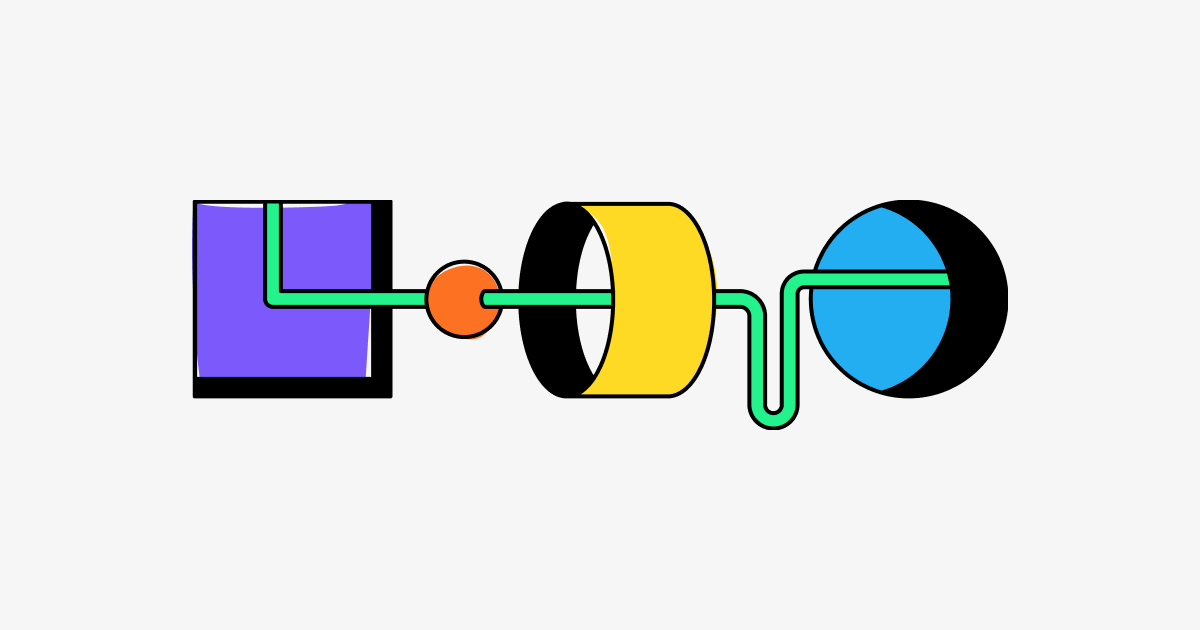It’s hard to believe, but once upon a time, everything in digital marketing was manual.
Scoring leads. Uploading them to your CRM. Building and updating audience segments in your email marketing tool.
Sheeesh.
With all that busy work, it’s a wonder we ever got anything useful done.
Fortunately, times have changed. Now, marketing automation tools handle all those low-value tasks (and a whole lot more), freeing us up to build more complex, joined-up strategies.
The net result? More leads, more sales, and less work.
Join us as we deep-dive into the world of marketing automation, explaining what it is, how it works, and how to get the most from it.

What Is Marketing Automation?
Marketing automation services accomplish basic marketing tasks without requiring any human input. According to Zapier, the most common uses for marketing automation tools are:
- Email marketing
- Spreadsheets and databases
- Task and project management
- CRM
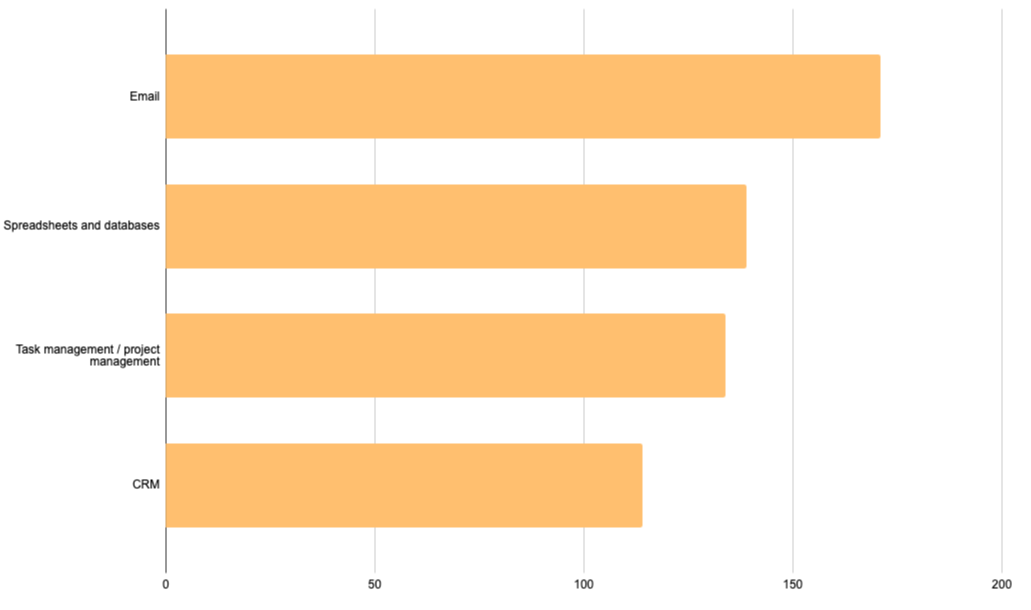 Automating tasks like these—and lots more besides—frees marketers up to focus on higher-value actions, such as strategic planning and creating high-quality, personalized content.
Automating tasks like these—and lots more besides—frees marketers up to focus on higher-value actions, such as strategic planning and creating high-quality, personalized content.
How Does Marketing Automation Work?
Marketing automation works by using software to manage repetitive marketing tasks such as scheduling social media posts, triggering email campaigns, and running paid ads.
Actions that might take a human minutes or hours to perform can be completed in fractions of a second, removing a major barrier to campaign performance. For instance, when you capture a new lead, marketing automation tools will add the contact to your CRM and enroll them in your welcome email series.
Why Use Marketing Automation?
Let’s consider the biggest benefits of using marketing automation software:
Increased Productivity
No one wants to spend their time copy-pasting contact details into a CRM or manually adding leads to audience segments.
It takes ages and it’s dull, dull, dull.
Frankly, you can only do that sort of work for so long before your brain turns to a thin, gruel-like mush, sapping your productivity.
Marketing automation tools free you from all that drudgery. According to WorkMarket, 54 percent of employees believe they could save an astonishing 240 hours per year through automation.
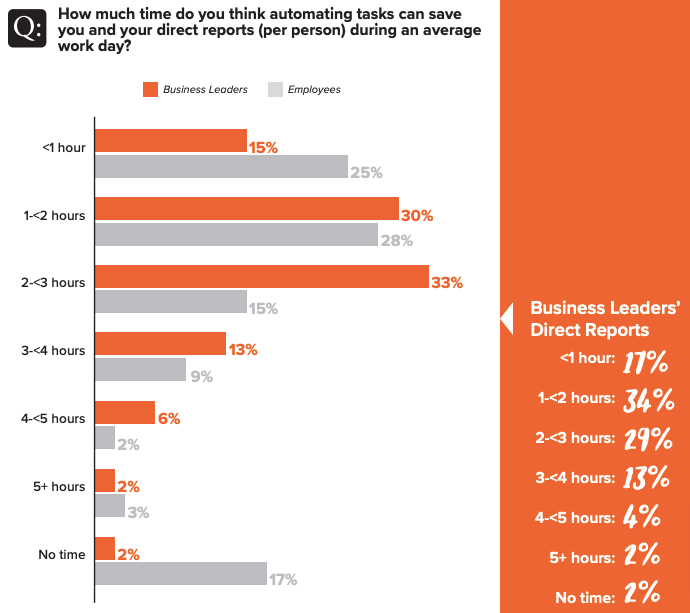
More Streamlined Customer Journeys
Automation opens the door to a world of bespoke customer journeys.
Think about it: without automation, every step on the path to purchase requires some sort of manual action.
You might have to move a contact from your “welcome” segment to your “nurturing” segment and, finally, to your “new customer” segment. If you forget any of those steps (or make a mistake), they’ll receive a bunch of irrelevant content.
When customer journeys are automated, users move down the sales funnel without any manual effort on your part. A potential customer might:
- See one of your Instagram ads
- Arrive on a landing page
- Sign up for your email list
- Receive a welcome email offering a discount on their first purchase
- Browse three product pages
- Receive an email of product recommendations based on their browsing history
- Add an item to their shopping cart but abandon the transaction
- Receive a cart abandonment email
- Return to the shopping cart and complete their purchase
That journey involves multiple channels (and, potentially, several different devices). It’d be impossible to accomplish without a marketing automation tool to join the dots between each step.
Better-Targeted Messaging
Streamlining the customer journey brings us neatly to our next point: crafting more personalized messaging, then sharing it with leads and customers at exactly the right time.
It’s what we call dynamic segmentation.
For the uninitiated, segmentation is all about cutting and slicing your audience into groups based on their:
- Characteristics
- Behaviors
- Interests
- Goals
With “traditional” segmentation, a customer remains in one of those groups until they’re manually moved to a different one, which massively limits your ability to respond as they progress down the sales funnel.
Dynamic segmentation is a little more sophisticated because the segments update in real time based on how the customer behaves.
So if they complete an onsite quiz, they’ll be automatically added to a segment that aligns with their product preferences…
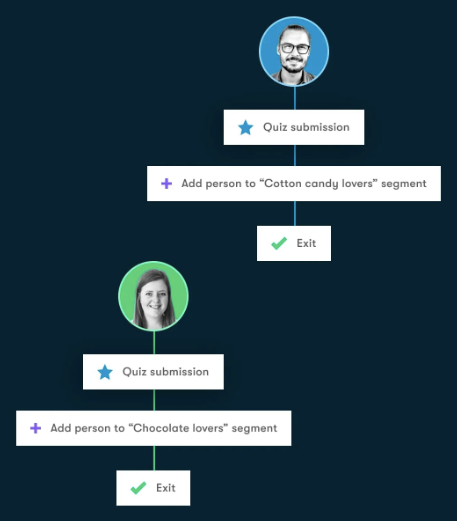 …then if they hit a certain purchase frequency or sales value, they’ll move to your “high-value customer” segment and receive targeted offers to reward their loyalty and encourage them to keep buying.
…then if they hit a certain purchase frequency or sales value, they’ll move to your “high-value customer” segment and receive targeted offers to reward their loyalty and encourage them to keep buying.
Improved Customer Experience
By this point, it should be apparent how marketing automation helps you deliver more meaningful customer experiences by giving you the power to react in real time.
Has a customer abandoned a browsing session? Hit them with an email full of products you know they’ll love—because they told you through their onsite behavior.
When marketing feels personalized right down to the individual level, customers feel happier and more appreciated. Which means they’re more likely to convert.
Happier Marketing Teams
Marketing automation isn’t just about driving efficiencies and boosting sales. It also has a significant positive impact on the overall satisfaction of your marketing team.
According to Zapier, after implementing automation software…
- 49 percent of marketers felt less burned out at work
- 37 percent said their mood and overall happiness improved
- 35 percent felt less stressed
What’s more, 31 percent said the increased productivity enabled by marketing automation tools made them more likely to take a vacation—probably because they were less worried about important tasks being missed during their time off.
And guess what? Research by Oxford University’s Saïd Business School discovered that happy workers are 13 percent more productive.
So automation software makes workers more productive by automating low-value tasks, which makes them feel happier, which makes them even more productive.
That’s what we call a virtuous circle.
Types of Marketing Automation Workflows
We’ve explained some of the key benefits of marketing automation. Now, let’s take a look at some of the most common use cases…
Welcome Series
You’ve persuaded a customer to hand over their email address. Congratulations! Now it’s time to start your relationship off on the right footing with a well-crafted welcome series.
The goal of your welcome series is to introduce each would-be customer to your brand, give them an insight into the types of content you’ll be sharing with them, and gently coax them toward making their first purchase.
Let’s take a look at a real-world example from antiperspirants brand Duradry.
Its welcome series starts by briefly outlining its brand proposition and providing a first-purchase discount…
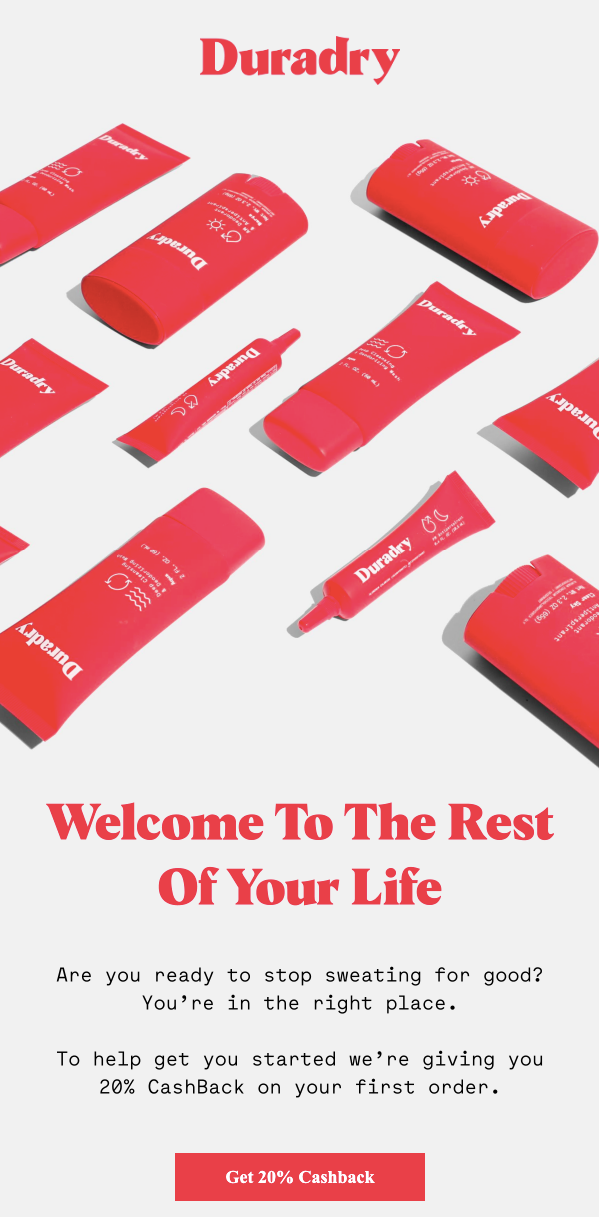 …and follows up by sharing its brand story and giving a short explanation of how the Duradry “system” works:
…and follows up by sharing its brand story and giving a short explanation of how the Duradry “system” works:
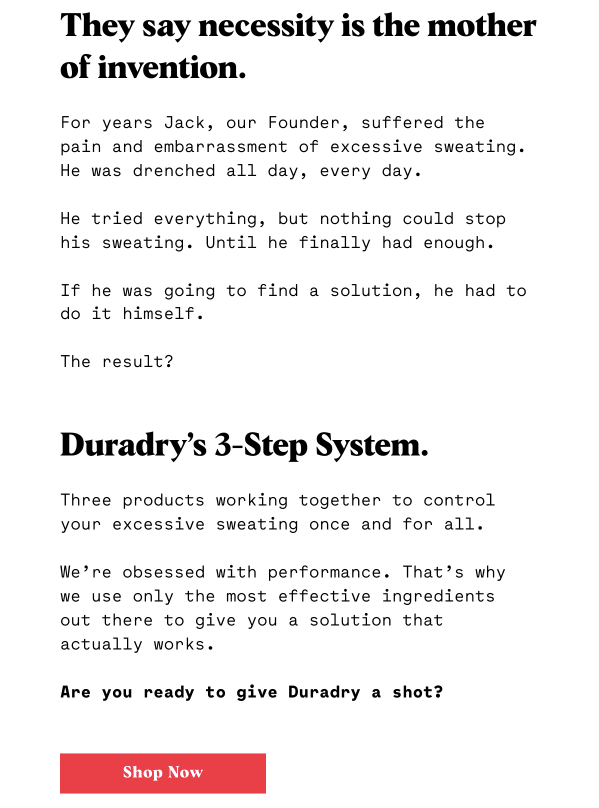 In the next email, Duradry gives more detail around how to use its products:
In the next email, Duradry gives more detail around how to use its products:
 And, for the final step of the welcome series, it shares some of its best customer reviews:
And, for the final step of the welcome series, it shares some of its best customer reviews:
 Clearly, that’s way too much information for a single email, which is why every welcome series should comprise multiple messages.
Clearly, that’s way too much information for a single email, which is why every welcome series should comprise multiple messages.
Learn more about Welcome Series:
- Borrow from These Welcome Message Examples to Create Instant Rapport with New Email Readers
- 9 Ecommerce Welcome Email Examples to Inspire Your Own
- 7 of the Best Welcome Emails We’ve Seen (And Why They Work)
Cart Abandonment
The average documented online shopping cart abandonment rate stands at 70.19 percent, according to the Baymard Institute. If you’re not taking active steps to convert some of those flighty shoppers, you’re missing out on a ton of revenue.
That’s where cart abandonment workflows come in.
Effective abandoned cart series typically contain 2 – 3 emails that remind the customer what they left behind, just like this example from Too Faced:
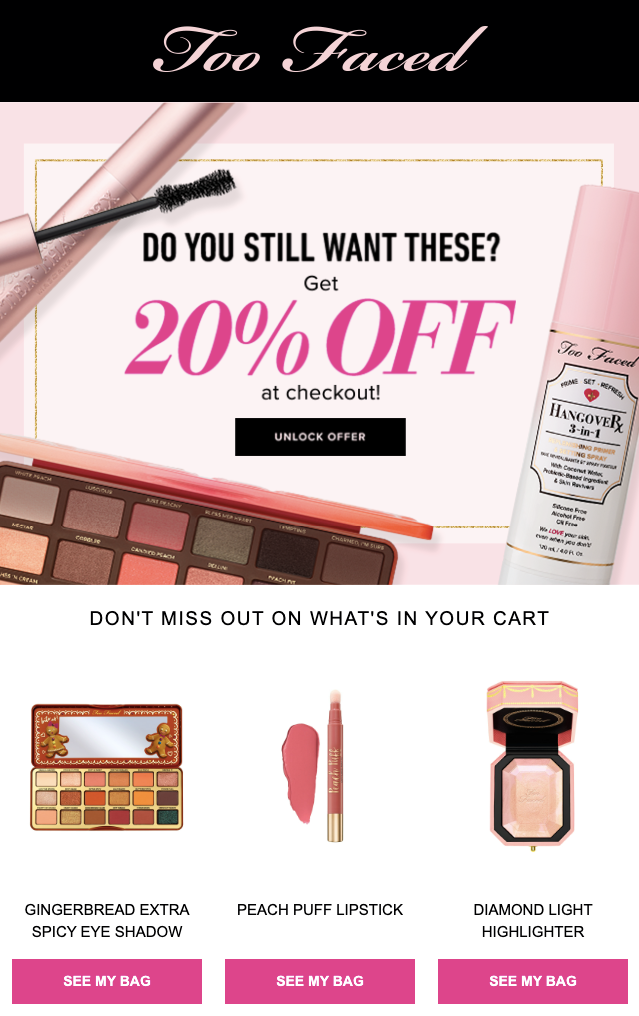 Introduce a little scarcity to your abandoned cart messaging by warning the customer that you won’t save their items forever. You might also consider adding a limited-time discount to persuade them to buy now.
Introduce a little scarcity to your abandoned cart messaging by warning the customer that you won’t save their items forever. You might also consider adding a limited-time discount to persuade them to buy now.
Pro tip: Drip’s abandoned product blocks automatically appear in customers’ inboxes within one hour of abandonment.
Learn More About Cart Abandonment:
- 21 Cart Abandonment Statistics To Help Build Your 2023 Strategy
- 48 Swipeable Cart Abandonment Subject Lines from Top E-Commerce Brands
- 7 Little-Known Cart Abandonment Strategies (With Examples)
- 7 of the Most Inventive Cart Abandonment Popup Examples We’ve Seen
- Learn How to Minimize Cart Abandonment From These Shopify Checkout Examples
- How to Make Amazing Abandoned Cart Emails for Shopify
- 9 Abandoned Cart Emails to Win Back Customers in 2023
- The Only Advanced Abandoned Cart Workflow Template You’ll Ever Need
Browse Abandonment
Sure, cart abandonments are costing you a bunch of sales.
But just think how many shoppers view a product page then dip without even starting the checkout process. If you could reach out to those customers and give them a compelling reason to buy, you’d earn a ton of extra revenue.
Browse abandonment emails are the answer, giving you the opportunity to remind customers what they’re leaving behind, give them a reason to buy, and suggest alternative (or complementary) purchases.
Kina & Tam is one brand that’s nailed its browse abandonment workflow.
It starts with a simple email urging shoppers to “take another look” at the product they viewed but didn’t buy…
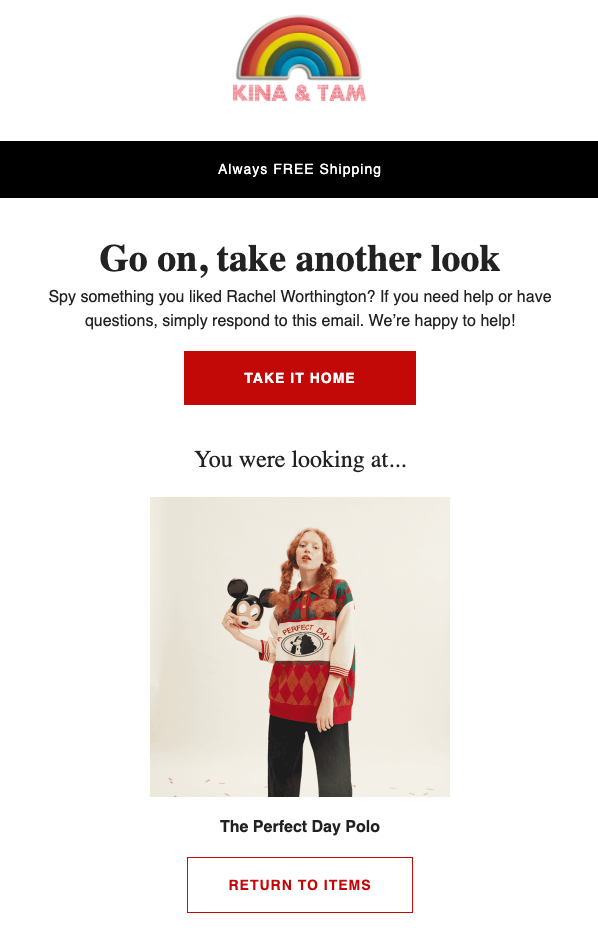 …before following up with a separate email including examples of five-star customer reviews for some of Kina & Tam’s most popular products, plus another reminder of the abandoned product:
…before following up with a separate email including examples of five-star customer reviews for some of Kina & Tam’s most popular products, plus another reminder of the abandoned product:
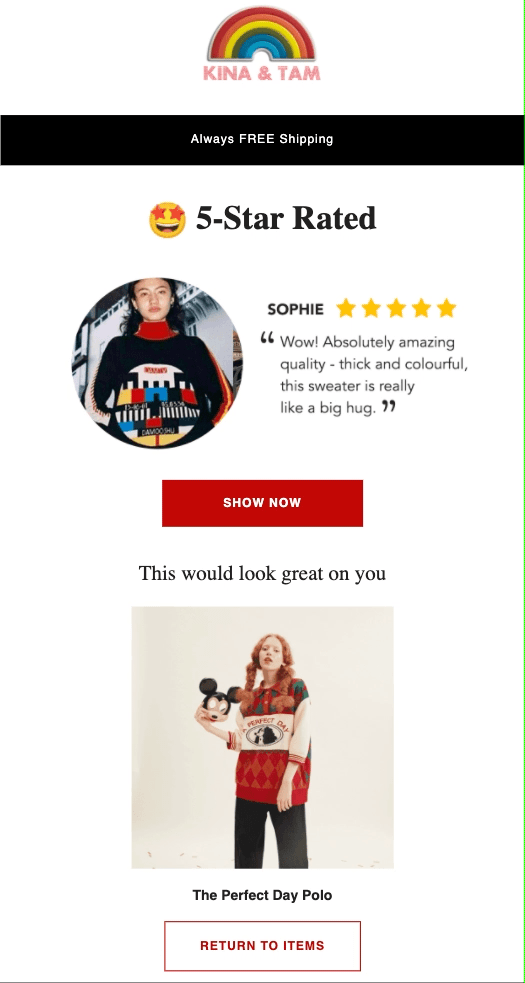 You could even add a discount or free shipping offer to your browse abandonment sequence to give the customer an extra reason to act fast.
You could even add a discount or free shipping offer to your browse abandonment sequence to give the customer an extra reason to act fast.
Post-Purchase
Post-purchase workflows target customers who—guess what?—have just made a purchase. We prefer to split them into two “flavors”:
Post-First Purchase
This is a big moment. If you can persuade your first-time buyer to purchase again, they’re well on the way to becoming one of your most loyal, valuable customers.
But remember, post-first purchase emails aren’t just a sales opportunity; you need to get the basics right, too.
Athletic Greens does this by sending first-time purchasers a simple order-tracking email…
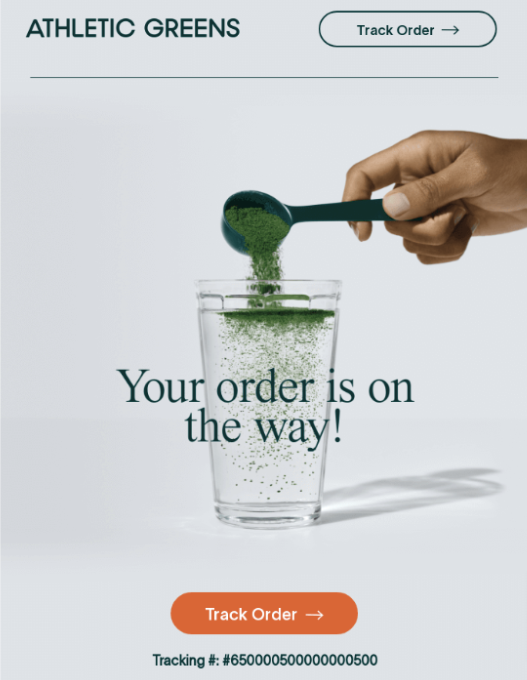 …followed by an invitation to join the brand’s community on Facebook:
…followed by an invitation to join the brand’s community on Facebook:
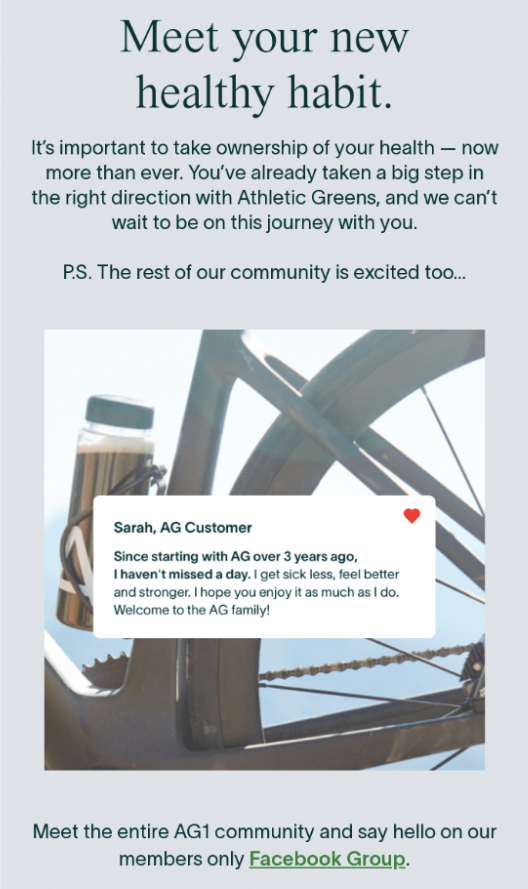 This is a fantastic way to get first-timers fully immersed in your brand and the value you provide.
This is a fantastic way to get first-timers fully immersed in your brand and the value you provide.
Post-Repeat Purchase
Repeat purchasers already know (and love) who you are and what you do, so you don’t need to convince them of anything. Instead, use your post-repeat purchase workflow to thank them for their loyalty by sharing a:
- Discount
- Special offer
- Free shipping
Basically, all the types of messages that would compel them to buy again.
But that’s not all.
These customers are already bought into your brand, so why not encourage them to share the love? That could include asking them to review their latest purchase or inviting them to a refer a friend, like this example from Brooklinen:

Learn More About Post-Purchase Emails:
- 5 Awesome Ways to Use Post-Purchase Offers That You Haven't Thought Of
- 8 Advanced Post-Purchase Workflows (That Will Help You Build Loyalty)
- 7 Post-Purchase Email Examples to Inspire Your Own
- How to (Really) Treat Your VIP Customers So They Keep Coming Back
Win-Back Series
Also known as re-engagement and reactivation campaigns, win-back campaigns target people who’ve stopped engaging with your email content and/or buying your products.
First and foremost, your goal is to compel them to click, which requires a compelling subject line.
Beyond that, you want to share something—anything—that encourages the lapsed customer to interact with your message. That might include:
- An unmissable discount
- A highly relevant product recommendation
- A piece of persuasive social proof
- A breakup or last-chance email
- A customer feedback survey
Skincare brand Proven took option #5, urging disengaged customers to share the reasons they didn’t buy:
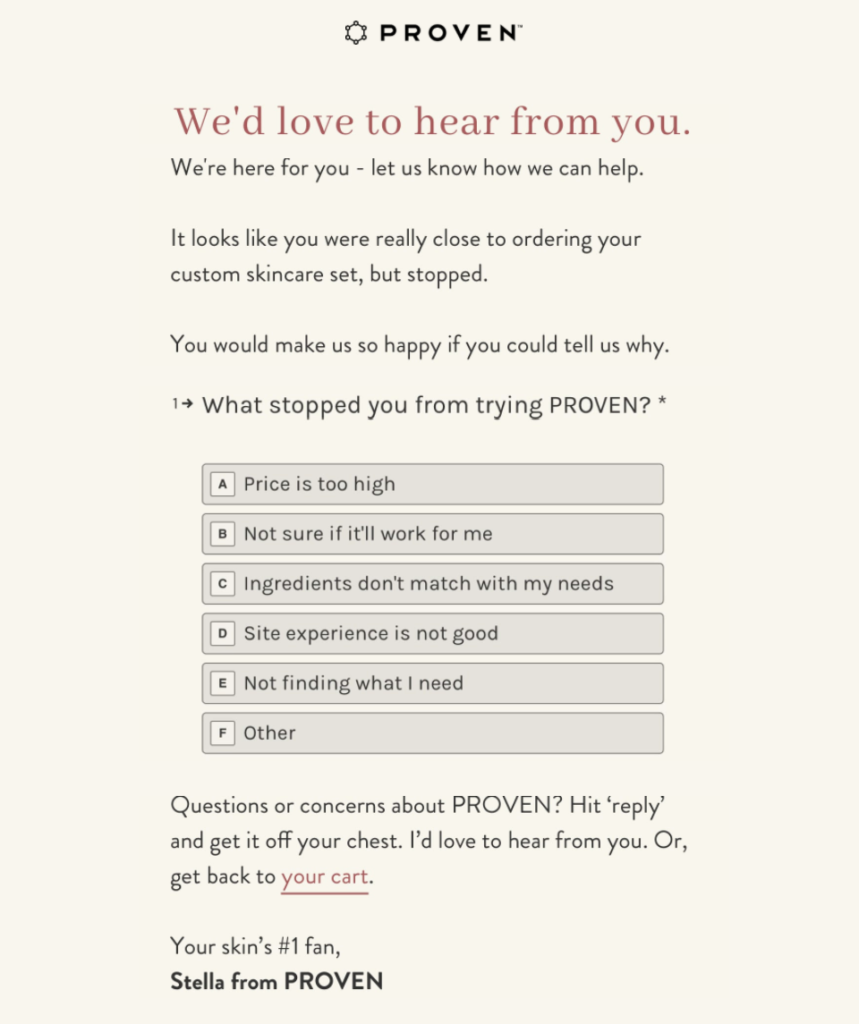 Full disclosure: Proven actually sent this as an abandoned cart email. But the multiple-choice format makes it perfect as a win-back email, too, making it super simple for the customer to respond.
Full disclosure: Proven actually sent this as an abandoned cart email. But the multiple-choice format makes it perfect as a win-back email, too, making it super simple for the customer to respond.
Even if recipients don’t go on to become loyal repeat buyers, at least Proven gets valuable feedback with which to hone its messaging going forward.
Learn more about Winback Workflows:
Marketing Automation Best Practices
So we’re agreed: automation is good. Now, let’s look at some key best practices to help you get the most from your marketing automation tools.
Define Buyer Personas
Automated or otherwise, your campaigns won’t be successful if they’re not built with your target audience in mind.
So the starting point for any marketing automation strategy is to define your buyer personas: descriptions of your ideal customer(s), incorporating a variety of demographic information, pain points, interests, and goals.
This step will help you create tailored content that slots into each step of the customer journey.
And, because your campaigns are automated, that content will land in the customer’s inbox or social feed at precisely the right moment.
Understand Which Tasks To Automate
Sure, automation is powerful. But just because a task can be automated, that doesn’t mean it should be.
As a general rule, tasks that are ripe for automation…
- Occur on a schedule
- Require information to be moved from one app or tool to another
- Are repetitive
- Involve the same steps each time they’re performed
Most automated tasks are part of a broader action or campaign. In isolation, they have minimal value—such as adding a contact to your CRM. But when combined with other tasks, they open the door to sophisticated, revenue-driving marketing strategies.
Map Your Lead Management Flow
The types of advanced, highly personalized customer journeys we’ve discussed throughout this article are only possible when you have a deep understanding of how leads flow through your sales funnel.
Take the time to map all the different touchpoints that might occur during the customer journey and plot your response. For instance, when a customer starts the checkout process, there are two possible outcomes:
- They complete the transaction, in which case you follow up with an order confirmation email
- They bale out before converting, triggering an abandoned cart email
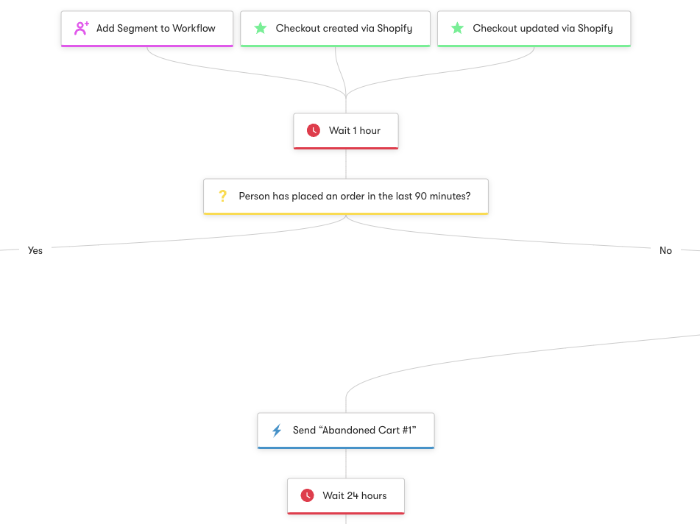
Collect Essential Customer Data
Marketing automation is often described as a way to increase efficiency and productivity. But its biggest strength—at least as far as we’re concerned—is its ability to ensure that customers only ever see relevant marketing messages.
To get this right, you need to capture the right information about each lead and customer.
Naturally, this will look different depending on your niche and audience.
For instance, most B2B brands ask a bunch of questions at the lead capture stage to learn about the lead’s business size, budget, industry, and business challenges.
By contrast, B2C marketers might only ask for a name and email address upfront, before building a more detailed profile of each lead based on things like:
- Their onsite behaviors
- The types of emails they open
- The social posts and ads they engage with
Figure out what data you need to nurture and convert your leads, then build dynamic segments so you can send targeted content to people with similar characteristics.
Create Laser-Targeted Content
Speaking of targeted content…
Traditionally, marketers—and customers—have had to make do with identikit content produced for a broad audience. Only brands with huge marketing budgets and massive customer lifetime values could afford to craft content that felt truly personalized.
But times change. Today, personalization isn’t a luxury; it’s a minimum standard.
According to McKinsey & Company, 71 percent of consumers now expect brands to deliver personalized interactions. What’s more, 76 percent feel frustrated when this doesn’t happen.
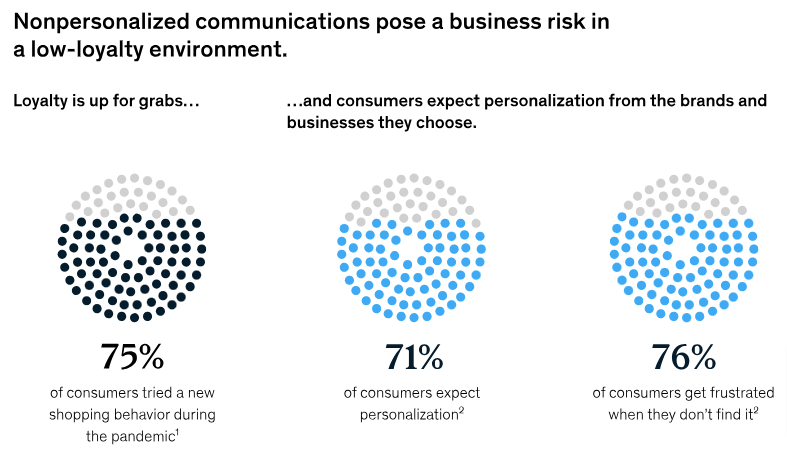 This presents a challenge for marketers.
This presents a challenge for marketers.
But every challenge brings an opportunity: if you can create personalized content that speaks to individual customers and recognizes where they’re at in the buyer cycle, you’ve got a fantastic chance of converting them.
In short, generic product emails won’t cut it any more.
Instead, share personalized recommendations based on each individual customer’s browsing and buying habits, just like Bellroy did here:

Track Performance and Iterate
By their very nature, automated campaigns are perfectly capable of running themselves. But that doesn’t mean you should set them live and forget about them; they still need a human touch to understand what’s working (and what isn’t).
Get into the habit of monitoring performance so you can fine-tune successful campaigns and switch off those that aren’t producing the desired results.
Even when everything’s running smoothly, there’s always an opportunity to trial a new customer segment or A/B test different content types.
Pro tip: Drip’s detailed analytics dashboards make it easy to see how much revenue you’re generating from each strategy and automation.
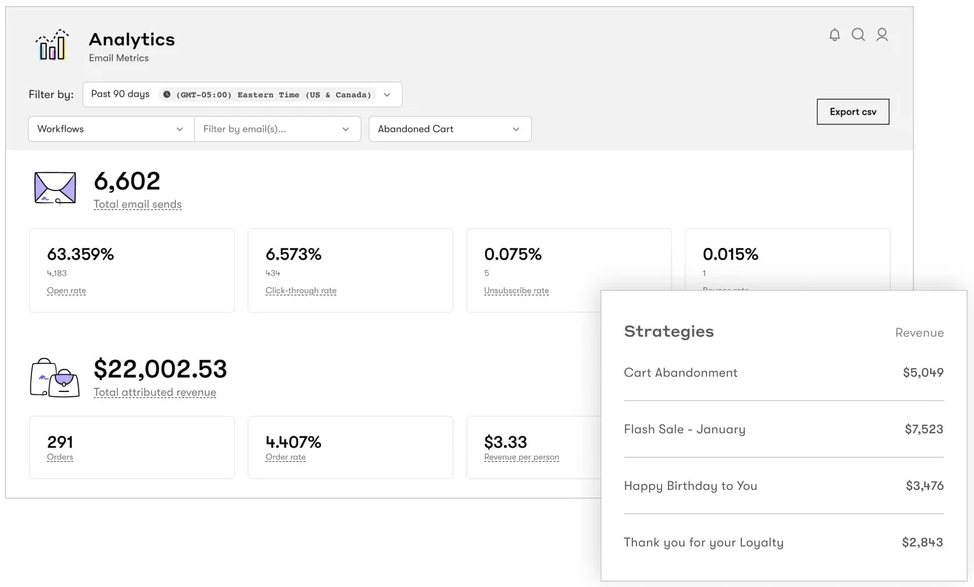
5 Marketing Automation Tools For Your MarTech Stack
You’ll only unlock all that good stuff if you choose the right automation products for your business.
To help you out, I’ve rounded up seven of the best marketing automation software options…
Drip
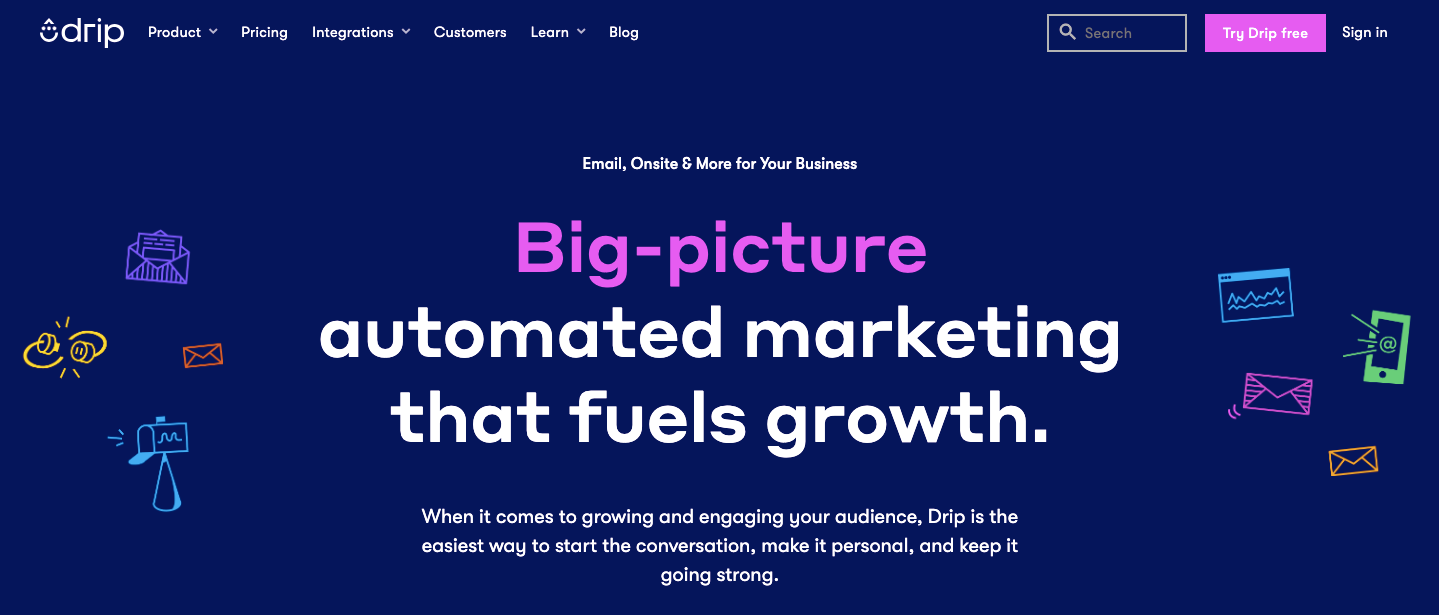
What Is It?
Drip (that’s us, BTW) is a customer-centric marketing automation platform for engaging and converting audiences through email and onsite campaigns.
What Are Its Top Features?
We know you’d rather tweak a tried-and-trusted campaign that start from zero, so we’ve built a bunch of marketing workflows, including:
- Welcome series
- Abandoned cart sequences
- Post-purchase emails
- Win-back series
Just plug in your branding and messaging and they’re ready to go.
Alternatively, use our intuitive point-and-click workflow builder to design automated, personalized onsite and email sequences tailored to your lead management flow.
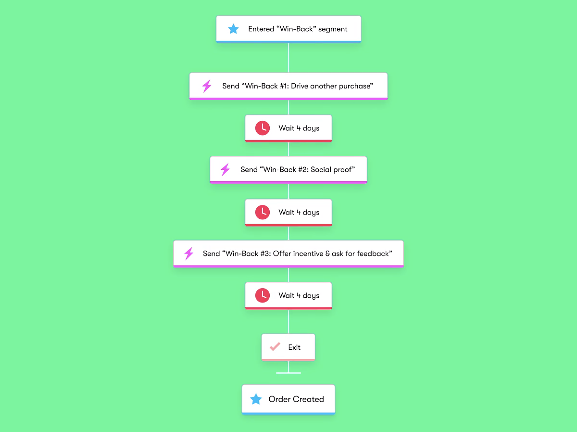
What Does It Cost?
Drip’s prices start at $39 per month for up to 2,500 contacts, including unlimited email sends, onsite campaigns, email support, and free migration.
Check out our pricing page to learn more.
Zoho CRM
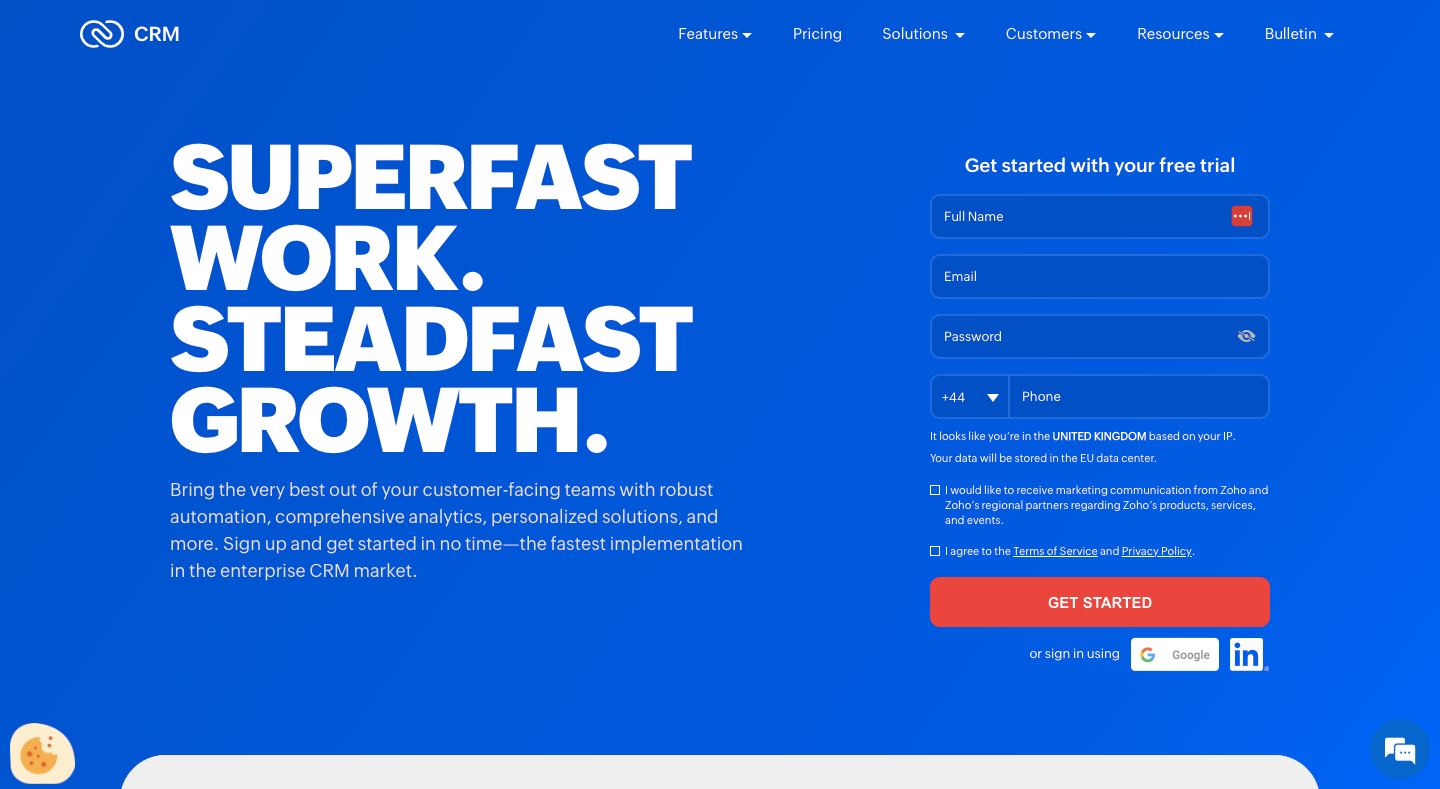
What Is It?
Zoho’s software handles everything from finance to HR to legal, but it also offers a CRM system with robust automation and comprehensive analytics.
What Are Its Top Features?
With Zoho’s marketing automation tools, you can tag contacts with keywords based on traits like company size, industry, lead source, and priority status—making it easier to track down and group those with similar characteristics.
Users can also manage events without leaving the CRM, such as creating invitations as email templates and scheduling them to send before the event.
What Does It Cost?
Zoho CRM prices start at €14 per user per month, including email templates, email authentication, and mass email sending.
HubSpot
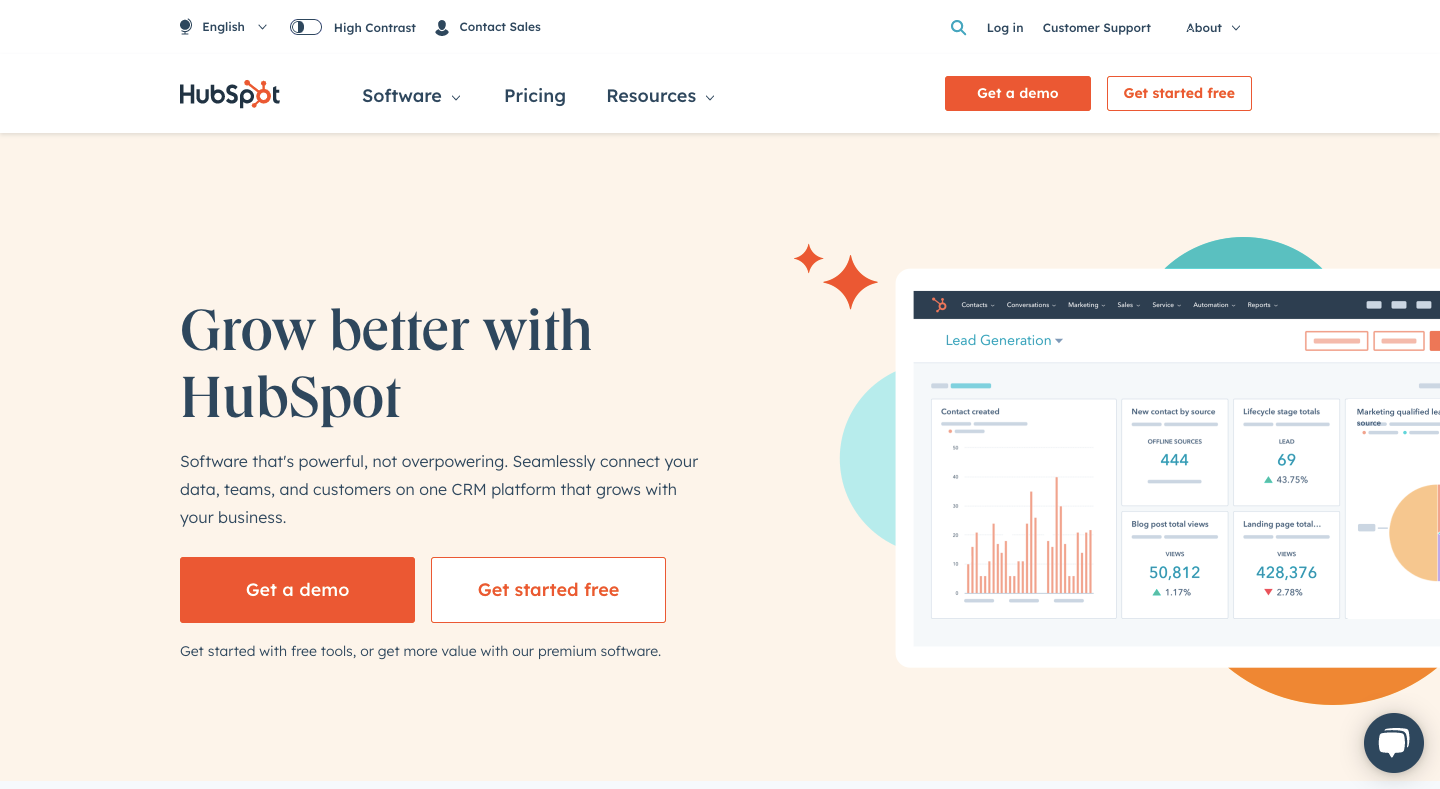
What Is It?
HubSpot is an all-in-one sales, marketing automation, customer support, and content management platform.
What Are Its Top Features?
Create automated workflows to handle repetitive tasks like lead scoring, data management, and sending leads to sales.
Want to know exactly when to follow up with a contact? Set up internal notifications that trigger when your potential customer performs a high-intent action, such as registering for a webinar, reading a customer success story, or visiting your pricing page.
That way, you need never miss another sales opportunity.
What Does It Cost?
Paid plans start at $18 per month and include 1,000 marketing contacts. Add more at a fixed cost for $18 per 1,000 contacts.
Act!
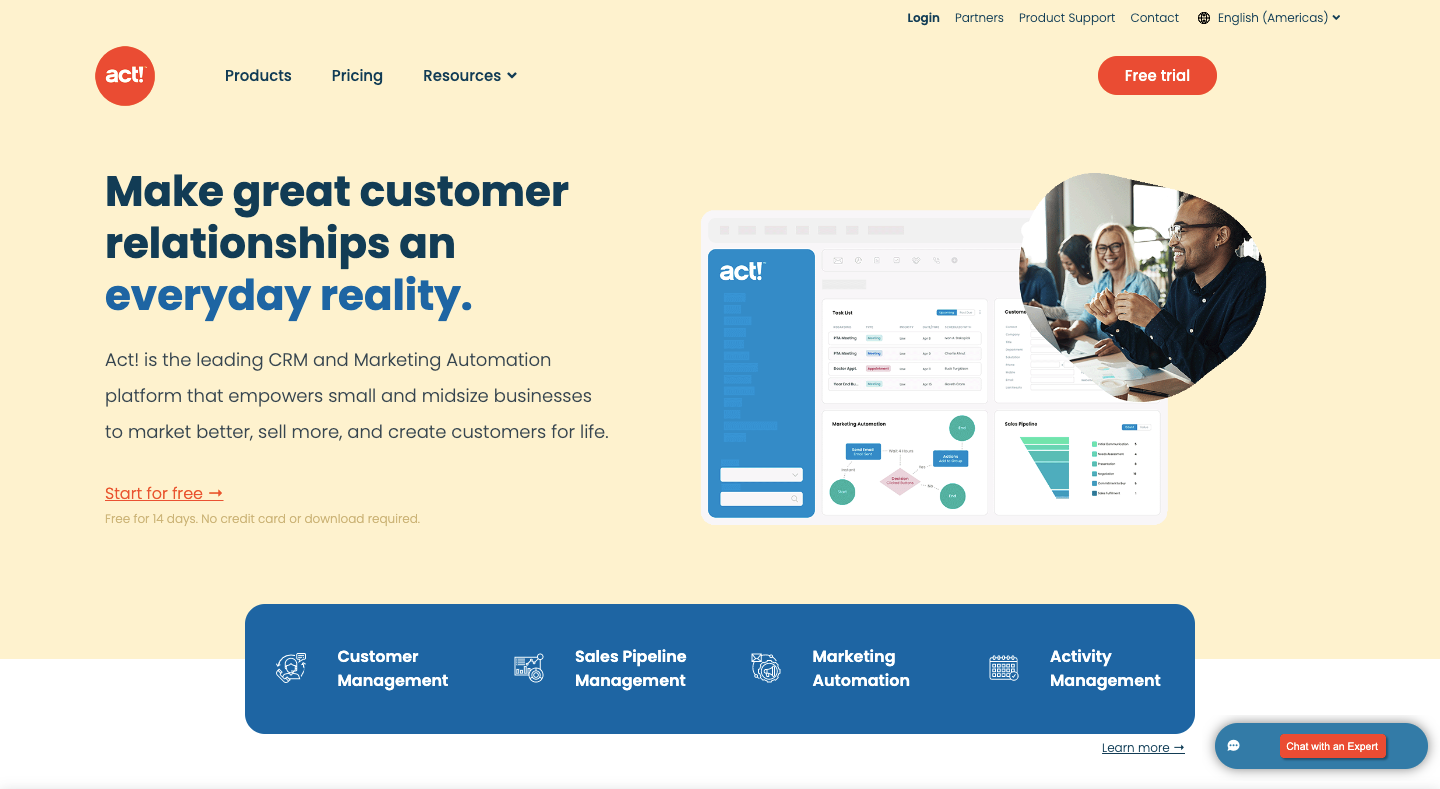
What Is It?
Think of Act! as HubSpot lite: a CRM and marketing automation platform aimed at small and midsize businesses.
What Are Its Top Features?
Use Act! to send one-off email blasts or automated campaigns driven by customer behaviors and responses.
If you need a little design inspiration, you can trawl through the platform’s library of 170+ email, newsletter, and landing page templates—all of which can be tweaked to your heart’s content using the simple drag-and-drop interface. Or if you already have your own email designs, you can import them using the interactive HTML editor.
What Does It Cost?
Act! prices start at $30 per month for cloud-based CRM and marketing automation, plus you can choose various add-ons, such as enhanced support, custom tables, and additional cloud storage.
Monday
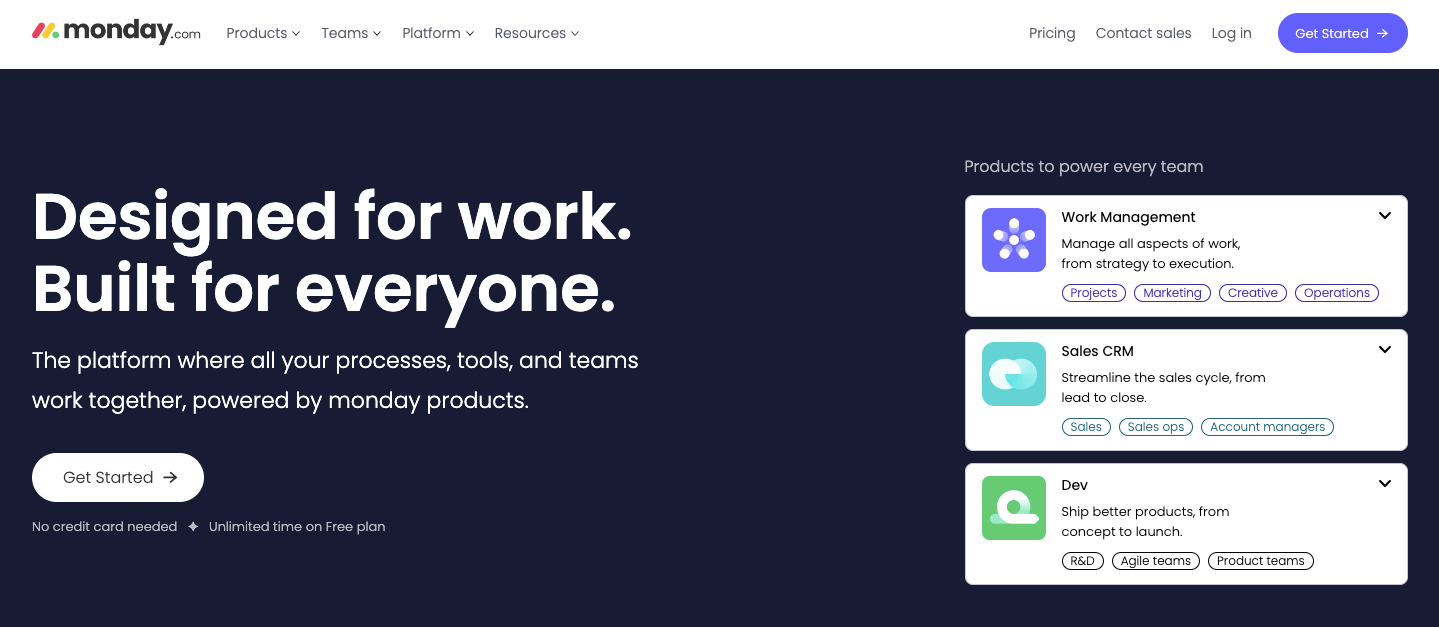
What Is It?
Monday is a project management and sales CRM platform used by 180,000+ customers worldwide.
What Are Its Top Features?
The platform’s automations remove a ton of manual labor from the project management process. For instance, it sends real-time updates when tasks are completed and automatically reminds all relevant parties when a deadline arrives.
You can even set up your own automations, such as creating a new action when a task’s status moves from “in progress” to “for review”.
What Does It Cost?
Monday’s prices start at $24 per month for three users, although project management automations are only available at Standard level and above, priced from $30 per month for three users.
Learn more in our roundup of the 7 Best Marketing Automation Software Tools To Amplify Your Strategy.

Conclusion
Whether you’re ready to dive head-first into the world of marketing automation or just looking to dip a toe into the water, start with a free trial of Drip.
You’ll get access to all of our marketing automation and segmentation features—plus our prebuilt workflows and professionally designed templates.
It’s the perfect way to learn exactly how automation can benefit your business.
Sign up for your 14-day free trial today—no credit card required!
